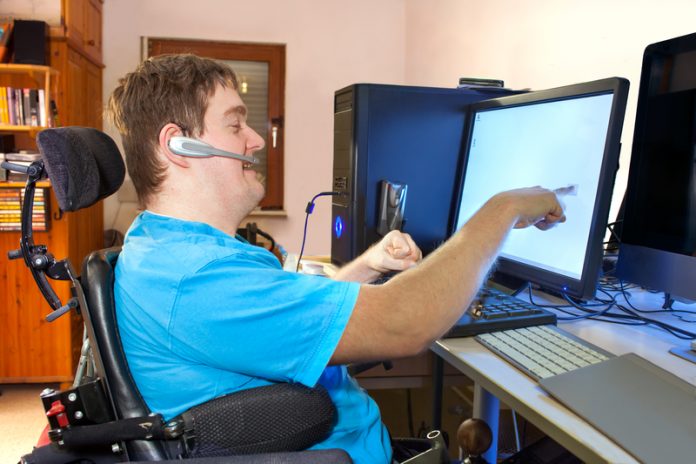Bill Mitchell, Director of Policy – BCS, The Chartered Institute for IT explains why one in five disabled adults never used the Web in 2019
Article 9 of the UN Convention on the Rights of Persons with Disabilities states for people with disabilities to lead a full and independent life they must have equal access to information through the Web. This is a fundamental human right, yet here we are in the golden age of the Web and as far as accessibility goes it’s in the dark ages, quite literally for someone with severe visually impairment. To quote1 from Robert Stevens, Professor of Computer Science at the University of Manchester and someone who is blind: “There are no heroics; there is no winning through against adversity. There is, however, getting on with it. One takes one’s opportunities where one can.”
Web accessibility is where technology can play a key role in ensuring those opportunities exist. However, ONS data2 collected in 2019 showed that 22% of disabled adults have never used the Web, compared to 9% in the general population who’ve never used the Web. It seems reasonable to suppose this is in large part due to unacceptably poor accessibility of Web services, rather than a lack of desire by disabled adults to use the Web. This is a major concern as interaction with healthcare and social services will gradually move to being offered only online in the long-term. Lack of accessibility in websites is a major barrier for disabled adults being able to have full participation in a digital society.
The new government Web Content Accessibility Guidelines3 (WCAG) for public sector websites and apps that are to be enforced through new regulations are a welcome and positive move towards improving accessibility. We will need to closely monitor whether these result in a step-change in overall website quality in addition to monitoring technical compliance. We also need to work with public service website developers to help them understand the needs of our diverse communities and how best to improve the overall quality of the user experience and move beyond minimal regulatory compliance that the new regulations will require.
In essence, the new government regulations are addressing the issue of ensuring website functionality is accessible. This is essentially a technical remedy to make sure online functionality is accessible to everyone. Functional accessibility is one aspect of wider concerns about ensuring online public services are truly inclusive. In other words, they are necessary but not sufficient for our public services to be truly inclusive. “The new government Web Content Accessibility Guidelines (WCAG) for public sector websites and apps that are to be enforced through new regulations are a welcome and positive move towards improving accessibility. We will need to closely monitor whether these result in a step-change in overall website quality in addition to monitoring technical compliance.”
What’s also important if we really want to improve real inclusivity, is to have a comprehensive range of online public services that give the maximum help possible to vulnerable and disadvantaged groups to become fully engaged citizens. Providing the most help possible includes ensuring we have absolute trust in the services we access to be fair, to treat us all as valued members of society and be absolutely reliable at all times.
We need to think about how Web accessibility is part of the overall accessibility problem within a public service. Consider a recent example of the complexities around providing public services through the Web. Recently the Guardian newspaper reported4 a scam in which criminals obtained social security claimants’ personal details, sometimes by posing as Department for Work and Pensions (DWP) staff, to make bogus online applications for universal credit. This illustrates how some vulnerable individuals through lack of understanding of complex social security regulations, the risk structures in place in financial institutions and lack of access to trustworthy independent support can be criminally exploited. Now imagine that scenario for someone with a disability, trying to understand through an online public service what’s gone wrong, how to get help and how to deal with all the agencies that are possibly going to be involved in sorting out the mess, if they even can sort out the mess.
The technical regulations being introduced to implement WCAG are absolutely essential as a very basic first step in ensuring Web access is equal for all, but access doesn’t just mean readable fonts or carefully designed HTML 5.0 layout. We must all do our part to help build public services that genuinely provide the best possible service that the 21st century Web can deliver for everyone.
References
1 http://www.cs.man.ac.uk/~stevensr/papers/sightless.pdf
2https://www.ons.gov.uk/businessindustryandtrade/itandinternetindustry/bulletins/internetusers/2019











